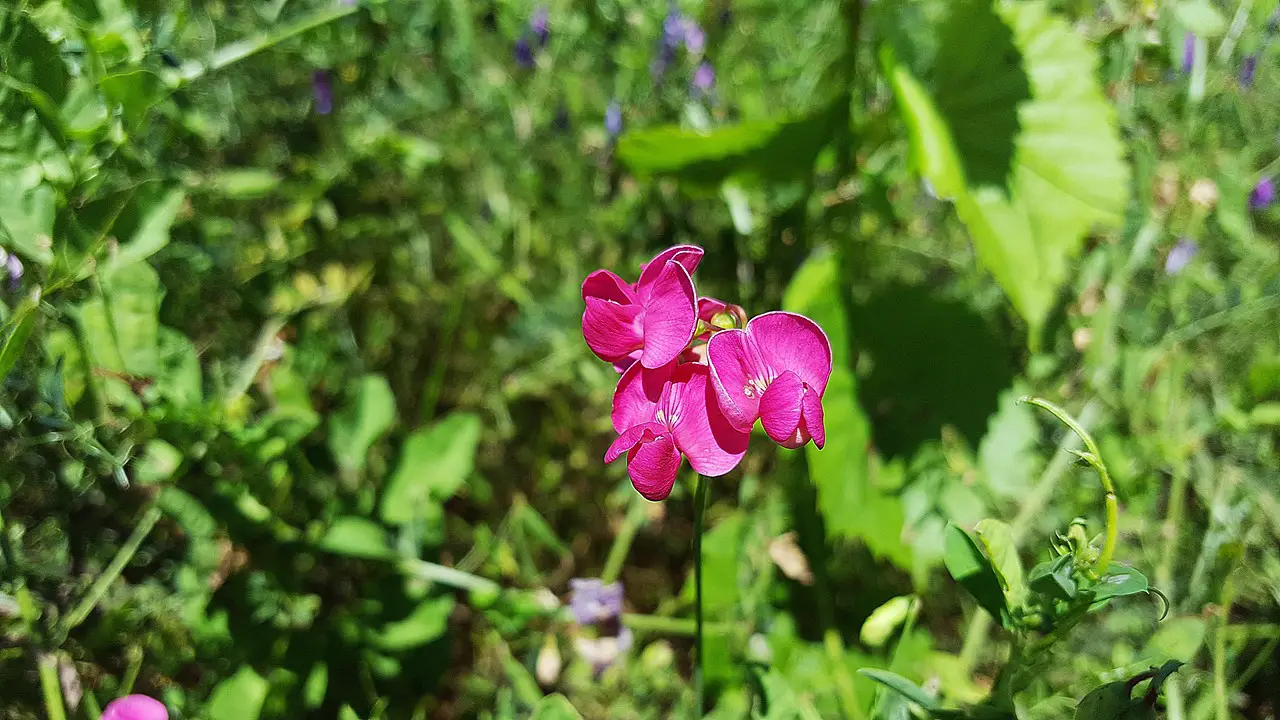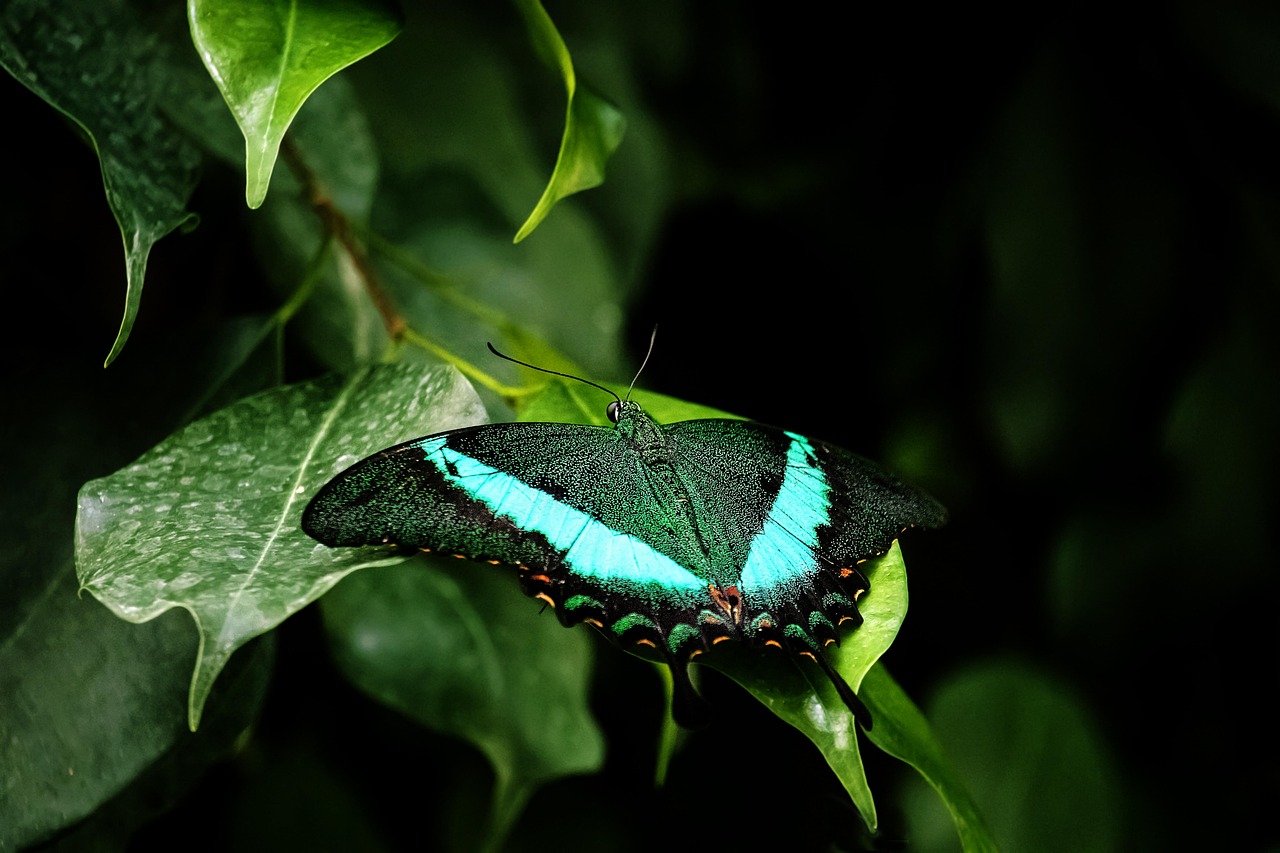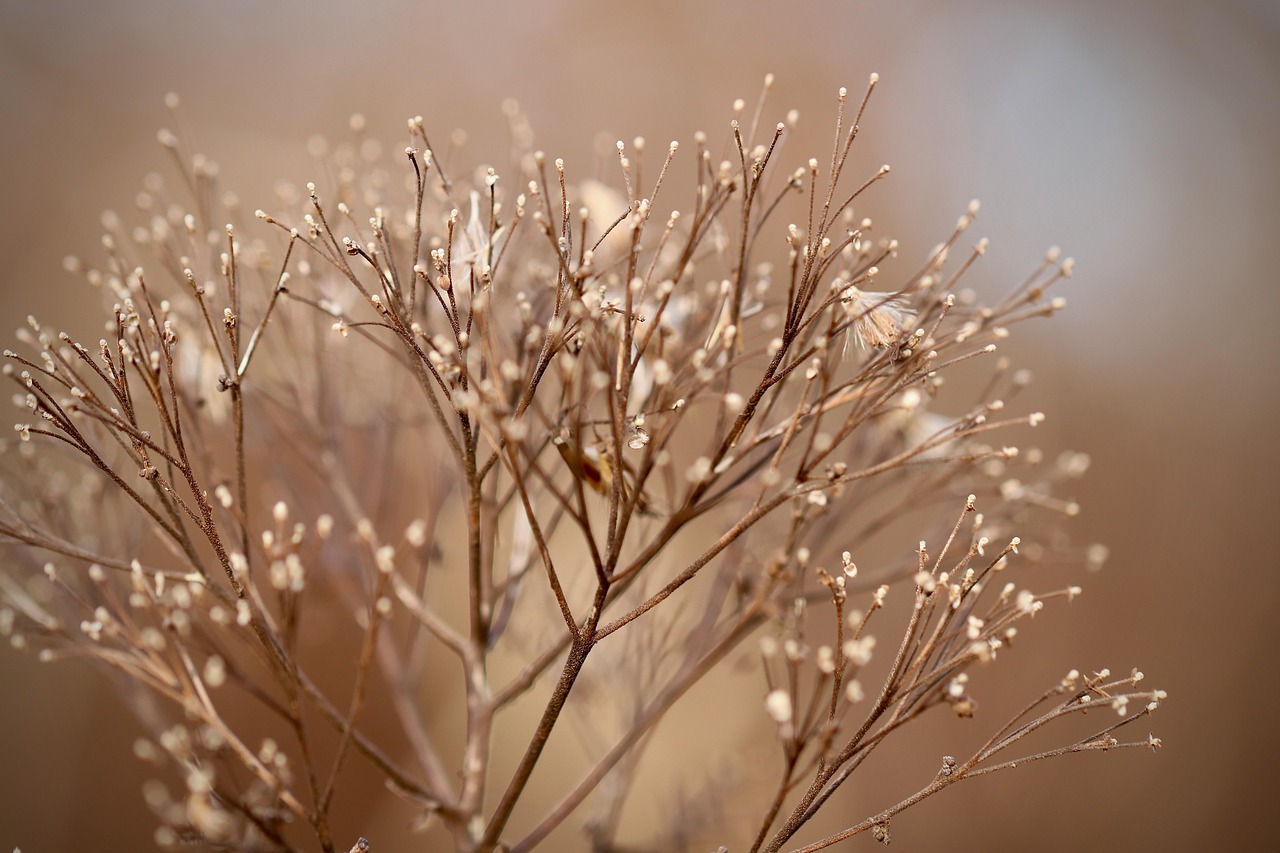Hermaphroditic plants are those that possess both male and female reproductive organs. This unique feature allows them to self-pollinate or cross-pollinate, enhancing their reproductive success in various environments.
Understanding Hermaphroditic Plants
Hermaphroditic plants play a crucial role in the ecosystem. They exhibit a fascinating adaptation that allows them to thrive in diverse conditions. These plants can produce both pollen and ovules, which are essential for reproduction. As a result, they can fertilize themselves or receive pollen from other plants, ensuring a greater chance of successful seed production.

This reproductive strategy is beneficial in environments where pollinators may be scarce or unreliable. In such situations, hermaphroditic plants can still reproduce effectively. For many species, this flexibility increases their chances of survival and helps them establish in different habitats.
There are two primary types of hermaphroditic plants: perfect flowers and monoecious plants. Perfect flowers contain both male (stamens) and female (pistils) structures within the same flower. Examples include roses and lilies. On the other hand, monoecious plants have separate male and female flowers on the same individual. Corn and cucumber are common examples of monoecious plants.
Key Features of Hermaphroditic Plants
Several characteristics define hermaphroditic plants. Understanding these features can provide insight into their ecological significance and evolutionary advantages.

- Self-Pollination: Hermaphroditic plants can often self-pollinate, which allows for reproduction without the need for external pollen sources.
- Cross-Pollination: These plants can also engage in cross-pollination with other hermaphroditic or dioecious plants, promoting genetic diversity.
- Adaptability: Hermaphroditic plants can thrive in various environments, making them highly adaptable to changing conditions.
- Resource Allocation: They can manage resources effectively, devoting energy to both male and female reproductive functions as needed.
The Role of Pollinators
While hermaphroditic plants can self-pollinate, many still rely on pollinators for optimal reproduction. Pollinators, such as bees, butterflies, and birds, help transfer pollen between flowers. This process enhances genetic variation, which is vital for the health of plant populations.
The presence of pollinators can significantly influence the reproductive success of hermaphroditic plants. In areas with abundant pollinators, these plants may produce more seeds compared to environments where pollinators are less common. This reliance on pollinators highlights the interconnectedness of ecosystems and the importance of preserving pollinator habitats.
Examples of Hermaphroditic Plants
Many common plant species exhibit hermaphroditic traits. Below is a table showcasing some well-known examples:

| Plant Type | Common Examples | Reproductive Method |
|---|---|---|
| Perfect Flowers | Roses, Lilies, Tulips | Self and Cross-Pollination |
| Monoecious Plants | Corn, Cucumber, Squash | Self and Cross-Pollination |
| Dioecious Plants (with Hermaphroditic Variants) | Kiwifruit, Date Palms | Mainly Cross-Pollination |
The adaptability of hermaphroditic plants contributes significantly to their survival. Their ability to switch between self-pollination and cross-pollination allows them to optimize reproductive success based on environmental conditions. In summary, these plants are vital components of many ecosystems, showcasing the beauty of nature’s diversity.
The Benefits of Hermaphroditic Plants
Hermaphroditic plants offer numerous advantages, both to themselves and to the ecosystems they inhabit. Their unique reproductive strategies contribute to biodiversity, resilience, and ecological stability. Understanding these benefits can provide insight into why hermaphroditic plants are so prevalent in various environments.
Increased Reproductive Success
One of the primary benefits of hermaphroditic plants is their ability to maximize reproductive success. By having both male and female reproductive organs, these plants can:

- Self-Pollinate: This ensures that they can produce seeds even in the absence of pollinators. Self-pollination is particularly advantageous in isolated environments where other plants are sparse.
- Cross-Pollinate: Hermaphroditic plants can also engage in cross-pollination with neighboring plants, promoting genetic diversity and stronger offspring.
This dual capability allows hermaphroditic plants to adapt to varying environmental conditions, ensuring their survival and proliferation in diverse habitats.
Genetic Diversity and Adaptation
The ability to cross-pollinate enhances genetic diversity among plant populations. Genetic diversity is crucial for:
- Resilience: Diverse genetic makeup helps populations withstand diseases, pests, and changing environmental conditions.
- Adaptation: Plants with varied genetics are more likely to adapt to new challenges, such as climate change or habitat loss.
By promoting genetic variation, hermaphroditic plants contribute to the overall health of ecosystems. This diversity supports not only the plants themselves but also the animals and insects that depend on them.
Environmental Factors Influencing Hermaphroditism
Various environmental factors can influence the occurrence of hermaphroditism in plants. Understanding these factors helps clarify why certain species have evolved this trait.
Resource Availability
The availability of resources such as water, sunlight, and nutrients significantly impacts plant reproduction. In resource-rich environments, plants may develop more complex reproductive strategies. Conversely, in resource-limited areas, hermaphroditism can be advantageous.
- Survival Strategy: In challenging conditions, hermaphroditic plants can utilize all available resources to ensure reproduction.
- Efficient Resource Use: These plants can allocate energy between male and female functions based on current resource availability.
Pollinator Activity
The activity level of pollinators in a given area also plays a significant role in the evolution of hermaphroditic traits. In regions where pollinators are abundant, plants may adapt by developing specialized mechanisms for cross-pollination. In contrast, in areas where pollinators are scarce, self-pollination becomes a valuable adaptation.
Challenges Faced by Hermaphroditic Plants
While hermaphroditic plants have many advantages, they also face specific challenges that can affect their growth and reproduction. Understanding these challenges is essential for conservation efforts.
Pest and Disease Vulnerability
Hermaphroditic plants can be susceptible to certain pests and diseases that target their reproductive structures. For instance:
- Pollen Dispersal: If pests or pathogens attack the flowers, it can hinder both self-pollination and cross-pollination efforts.
- Seed Production: Damage to reproductive organs can lead to reduced seed production, affecting future plant generations.
Genetic Bottlenecks
Although genetic diversity is a strength, hermaphroditic plants may encounter genetic bottlenecks, especially in isolated populations. This occurs when:
- Limited Genetic Exchange: If hermaphroditic plants are far apart, cross-pollination opportunities decrease, leading to inbreeding.
- Lack of Diversity: Inbreeding can result in weaker offspring that may be less resilient to environmental changes.
Addressing these challenges is vital for the continued survival of hermaphroditic plant species. Conservation efforts must focus on enhancing pollinator habitats and maintaining genetic diversity within plant populations.
Hermaphroditic Plants in Agriculture
Hermaphroditic plants hold significant importance in agriculture. Their unique reproductive characteristics can be advantageous for crop production, breeding programs, and food security. Understanding how these plants contribute to agriculture can help farmers and researchers make informed decisions.
Improved Crop Yields
The ability of hermaphroditic plants to self-pollinate can lead to improved crop yields. This is especially crucial in commercial farming, where consistent production is essential. The benefits include:
- Reliability: Farmers can rely on hermaphroditic crops to produce seeds even in the absence of adequate pollinators.
- Uniformity: Self-pollination often results in more uniform seed and fruit development, leading to better quality produce.
This reliability makes hermaphroditic plants a preferred choice for many agricultural systems, particularly in regions where pollinator populations are declining.
Breeding and Hybrid Development
In agricultural research, hermaphroditic plants are valuable for breeding programs. Their capacity for self-fertilization facilitates the creation of hybrids with desirable traits. Some important aspects include:
- Trait Stabilization: Breeders can stabilize specific traits by repeatedly self-pollinating hermaphroditic plants, ensuring that desired characteristics are consistently passed on.
- Hybrid Vigor: Hybrid varieties often exhibit increased vigor and resilience, benefiting from the genetic diversity introduced through cross-pollination.
This hybrid development is critical for enhancing crop performance and adapting to changing environmental conditions.
The Role of Hermaphroditic Plants in Ecosystems
Beyond agriculture, hermaphroditic plants play an essential role in maintaining ecological balance. Their presence can influence various aspects of ecosystem health.
Biodiversity Support
Hermaphroditic plants contribute to biodiversity in multiple ways:
- Habitat Creation: These plants provide food and shelter for numerous insects, birds, and other wildlife, supporting complex food webs.
- Pollinator Attraction: By producing attractive flowers that cater to pollinators, hermaphroditic plants help sustain these vital species within ecosystems.
Their role in promoting biodiversity is crucial for ecosystem resilience and stability.
Soil Health Improvement
Hermaphroditic plants also play a part in enhancing soil health. They contribute to soil fertility through:
- Nitrogen Fixation: Some hermaphroditic species, such as legumes, have symbiotic relationships with nitrogen-fixing bacteria, enriching the soil with essential nutrients.
- Organic Matter Contribution: The decay of plant material from hermaphroditic species adds organic matter to the soil, improving its structure and water retention capabilities.
Healthy soils are fundamental for sustainable agriculture and overall ecosystem functioning.
Cultural Significance of Hermaphroditic Plants
The cultural significance of hermaphroditic plants extends beyond their ecological roles. Many societies have valued these plants for their unique characteristics and contributions to human life.
Traditional Uses
Many cultures have utilized hermaphroditic plants for traditional medicine, food sources, and rituals. Key aspects include:
- Culinary Uses: Hermaphroditic plants such as cucumbers and tomatoes are staples in various cuisines worldwide.
- Medicinal Properties: Several hermaphroditic species are known for their medicinal uses, providing remedies for ailments across different cultures.
This cultural appreciation highlights the importance of preserving these plants and their habitats.
Symbolism and Folklore
In addition to practical uses, hermaphroditic plants often carry symbolic meanings in folklore and traditions. For example:
- Fertility Symbols: Many cultures associate these plants with fertility due to their reproductive capabilities.
- Sustainability Icons: The adaptability of hermaphroditic plants often symbolizes resilience and sustainability in the face of environmental challenges.
This rich cultural significance underscores the need to understand and protect hermaphroditic plant species as integral parts of our natural heritage.
Conservation Efforts for Hermaphroditic Plants
Given the importance of hermaphroditic plants in ecosystems, agriculture, and culture, it is crucial to implement effective conservation strategies. These efforts aim to protect these plants from threats such as habitat loss, climate change, and invasive species.
Habitat Preservation
Preserving the natural habitats of hermaphroditic plants is vital for their survival. Key strategies include:
- Protected Areas: Establishing national parks and nature reserves can safeguard critical habitats where these plants thrive.
- Restoration Projects: Rehabilitating degraded ecosystems can enhance biodiversity and support the growth of hermaphroditic plant species.
Community involvement in habitat preservation is essential. Local populations can play a significant role in protecting these environments through sustainable practices and awareness campaigns.
Research and Education
Research plays a crucial role in understanding the biology and ecology of hermaphroditic plants. Educational programs can raise awareness about their importance. Key initiatives include:
- Botanical Research: Conducting studies on the genetic diversity and reproductive strategies of hermaphroditic plants can inform conservation efforts.
- Public Education: Workshops and informational campaigns can educate communities about the ecological roles of hermaphroditic plants and the threats they face.
By fostering a deeper understanding of these plants, we can promote their conservation and highlight their significance in our ecosystems.
Future Perspectives on Hermaphroditic Plants
The future of hermaphroditic plants will depend on our commitment to conservation and sustainable practices. As we face global challenges such as climate change and biodiversity loss, it is essential to consider how these plants can contribute to resilience and adaptability.
Climate Change Adaptation
Hermaphroditic plants may play a critical role in adapting to climate change. Their reproductive flexibility allows them to respond to shifting environmental conditions. Some potential benefits include:
- Diversity in Crops: Incorporating hermaphroditic species into agriculture can enhance food security by diversifying crops that are resilient to climate variations.
- Natural Ecosystem Resilience: Promoting hermaphroditic plants in natural ecosystems can help maintain biodiversity, which is essential for ecosystem health during climate stress.
Final Thoughts
Hermaphroditic plants are remarkable examples of nature’s adaptability and complexity. Their unique reproductive strategies allow them to thrive in various environments, contributing significantly to biodiversity, agriculture, and cultural heritage. The benefits they offer extend beyond their individual species; they play a vital role in supporting entire ecosystems.
As we move forward, it is crucial to prioritize the conservation of these plants. Efforts must focus on habitat preservation, research, education, and sustainable agricultural practices. By recognizing the value of hermaphroditic plants, we can ensure that they continue to flourish for future generations. Together, we can foster a deeper appreciation for the intricate connections between these plants and the world around us.
Through informed actions and collective responsibility, we can protect and celebrate the diversity of hermaphroditic plants, ensuring their vital roles in our ecosystems and cultures endure.
